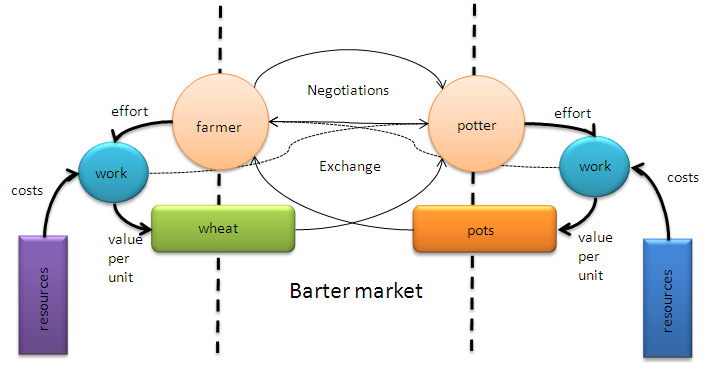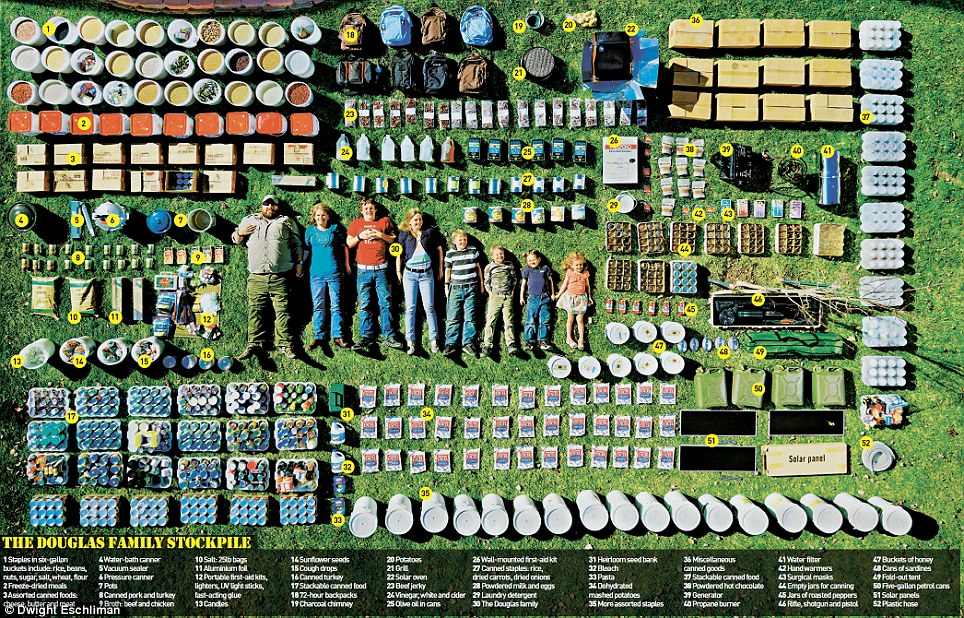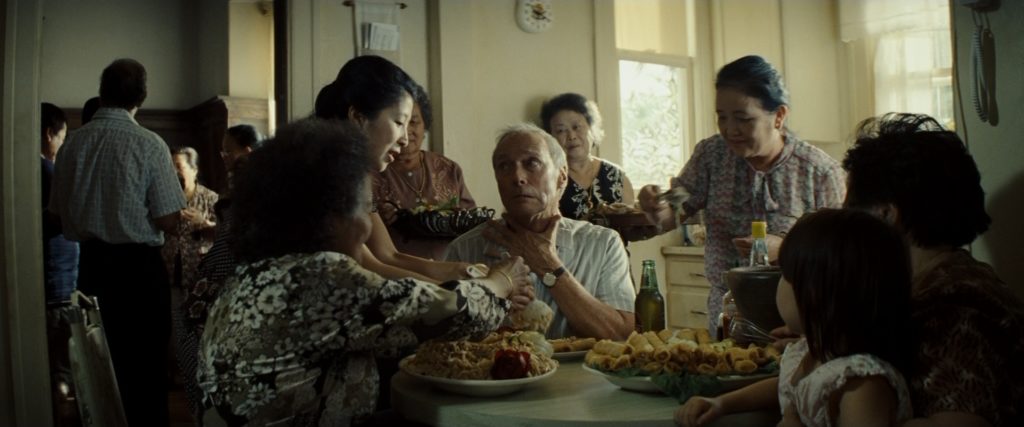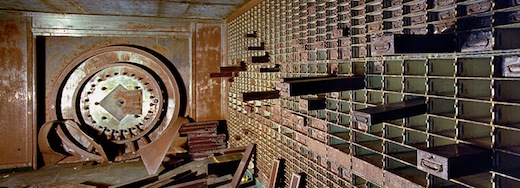The story, timeline and references in this article (Part 1) were put together for reference in my next article (Part 2), “The Creature from Galt’s Gulch“.
All publicly available documents, articles or references to Galt’s Gulch Chile (GGC) are cited or linked to in this article as of 12/9/14. The best overall narrative was written by “someone who left a great life and a job, to move to Chile, in the hopes of building this ambitious project” and posted on The International Man Forum. I’ve added comments (TG:) to fill in or correct the narrative where I know it to be inaccurate or where perspective would be helpful.
Intro
As introduced by “Dave322” on the International Man Forum just before posting it on August 27th, 2014:
“A large number of employees and investors received the following email. It was sent by a producer for an American television programme, who happened to work at GGC, in its early days. They were looking for people to interview for an upcoming show they are doing. It is titled, “Kenneth Dale Johnson, The Bernie Madoff of Bitcoin”.”
TG: It appears the intended show was never made.
Following the narrative, below, is a timeline assembled by reading all GGC related documents and listening to all GGC related radio shows and podcasts, multiple times.
Narrative
I am sorry to be the bearer of bad news, but you are receiving this email because of your investment in or association with Ken Johnson and Galt’s Gulch Chile (GGC). What follows is a brief time line of this project – a short summary of a much larger story that is still being written. This will be the first of many emails detailing the scheme of which you are a victim.
In 2012, Ken Johnson and Jeff Berwick (The Dollar Vigilante) explored the idea of creating a community in Chile that would appeal to people worried about the financial and political stability of their home countries. Chile, they believed, would be a welcoming home for those of a libertarian/anarchist and free market bent, much as Argentina is home to Doug Casey’s Cafayate. Turns out that John Cobin (Host of Red Hot Chile) and his associate German Eyzaguirre also had plans to launch a community In Chile. When Berwick and Johnson met Cobin and Eyzaguirre in Chile in late 2012, they decided to join forces. Cobin and Eyzaguirre had tried to purchase land near Curacavi – a plot of land referred to as El Tranque (aka Freedom Orchard) – but could not raise the funds to fulfill the contract. Cobin and Eyzaguirre helped Johnson find a tract of land nearby – Caren, known locally as “El Penon” for a large rock formation near the crest. In exchange for finding the property and helping to facilitate the deal, Cobin and Eyzaguirre would receive $250,000 and 30% of the shares of the holding company. Berwick and Johnson would evenly split the remaining 70%.
TG: Cobin and Berwick agree that only 20% of the shares of the holding company were to be assigned to Cobin and Eyzaguirre and the $250k finders/negotiation fee was later increased to $285K. They discuss this on Cobin’s 9/5/14 radio show, 42 min, 30 sec. Therefore, Berwick and Johnson could split the remaining 80% of the deal, not 70%. It is possible the 30% figure in this narrative was a direct quote from Cobin, Berwick or Johnson. However, the only recording I have is from the principles, themselves, who say it was 20%.
$1.75 million was raised from four Founders, known as the “First Round.” Within a month, the sale had been made for $1.18 million – the majority of the money that the four founders (funders) had put up. None of the founders was Johnson, Berwick, Cobin and Eyzaguirre, or any of his associates. They were just regular people who wanted to move to the proposed community.
TG: The only “regular” person in this group of four would have been Johnson, who ostensibly brought nothing but a moving mouth to the deal. Cobin and Eyzaquirre found a near perfect property, created a detailed business plan, suggested the GGC name, contacted Berwick through his TDV employee, Johnson, and persuaded them to start attracting investment capital for the project. Cobin also setup the holding company, negotiated the price/acre to be an amazingly low $270 US. For Berwicks part, all public articles about this project suggest it was his efforts that attracted the four founders to purchase the property. There were many subsequent “regular” people who just wanted to move to the proposed community but Cobin, Eyzaquirre and Berwick were not among them.
As quickly as the sale had been made, it was discovered that the land would be unsuitable for the promised development. They told the first rounders it would be subdivided into 3,000 parcels. Turns out it could only be divided into 12 parcels. And even those 12 had building restrictions due to the elevation and being zoned for agricultural use. To top it off, though there were water rights (surface only), there was very little water. Johnson failed to register the few wells that existed,within the required time frame, making matters worse. The entire deal was a spectacular failure. Johnson would later place fault with Cobin and Eyzaguirre for misrepresenting the possibilities of the land. That should have been the end of Ken Johnson’s tenure as developer or manager of a community of expatriates in Chile. Instead, it was just the beginning.
TG: The property had more than enough water through consolidated wells and dam water access, but Johnson, who didn’t speak Spanish or have any local contacts or knowledge of the process, bungled the clearing and consolidation process to get them inscribed to the property. Cobin and Eyzaguirre would have done all this had Johnson not gone incommunicado (See RHC Radio show, 9/12/14, 14 Min 30 sec.). The correct water inscription process, alone, would have increased the number of lots allowed in the subdivision and Cobin and Eyzaguirre had similar solutions at the ready to resolve other zoning challenges. Such is the nature of land development for which the involvement of Cobin and Eyzaguirre was crucial. Johnson’s pattern is clear: All obstacles he couldn’t overcome after cutting himself off from the talent were blamed on the talent. This is like blaming a broken pipe on a plumber whom you’ve never called! This insane pattern of blame is important to the psychopaths scheme: It elicits the sympathy of other parties who, having no time to investigate the situation, assume the psychopath has been wronged and is in need of help. In short order, all who even listen to a story are drawn into the web and even blamed, themselves, for one thing or another.
To rewind a bit, before the sale of Penon was registered to one of many legal entities tied to GGC, Berwick and Johnson managed to nullify their deal with Cobin and Eyzaguirre, and register title to the albatross Penon land to a Chilean entity – Inmobiliaria SA – that only they had 50/50 control of. Johnson’s swift move to oust Cobin would foreshadow Berwick’s own treatment by Johnson.
TG: What follows are the, possibly true, details of a series of purchases and land swaps that Johnson engages in after bungling almost every aspect of the first property deal of El Penon. I find it unnecessary to follow Johnson’s rabbit trail in order to learn most of the important lessons from this deal. I will interject comments only if I can clarify something or know that something has been written is not true or described, poorly. I have no direct knowledge of all these swaps so must leave the accuracy of these descriptions to the original author who remains unknown to me as of 12/9/2014.
In a display of pure brass, Johnson doubled down and found another property adjacent to El Tranque and Penon: a land known as Lepe. Without a penny to his name or a single investor, he negotiated a cash deal (to be paid in installments), agreeing to pay a staggering $6,850,000.00 USD for land and water rights. Now, why would the seller, Guillermo Ramirez, make a deal with a total stranger, from a foreign country, who had no money and no reputation? In short, he did so, because Johnson was offering him nearly 4 million dollars more than the price he had already agreed to sell the land for (to Cobin and Eyzaguirre). Locals were astounded by the price tag. Some allege there was a kickback scheme between Ramirez and Johnson; this theory is buoyed by the fact that in addition to the inflated purchase price, Ken Johnson was to issue a 5% stake in Galt’s Gulch Chile to Mr Ramirez, when payments were completed. Still others believe this is just another case of a foolish Gringo being taken by a wise local who grossly overstated the value of the land, the profitability of the farm, and the amount of water. (Johnson would later exaggerate these already inflated figures to potential clients.) The actual amount of water is not known because Johnson, for a second time, going against the advice of his paid legal counsel, performed no due diligence. Not a single water test was performed.
Upon hearing that his employee and partner had unilaterally entered into another hasty land deal, Berwick panicked. Johnson had no credibility or reputation. This entire venture was on the shoulders of Berwick. The initial debacle could have been enough to destroy his reputation. He had been heavily promoting the idea of this community, shared 50% of the holding company, and had even given Johnson 50% of his organization, The Dollar Vigilante. Ken was also doing other business development for The Dollar Vigilante, most notably a questionable Paraguayan passport program. Berwick apparently felt he was in too deep to turn back. And even though he had doubts, he continued to play the hand he was dealt, and went about promoting the community and stood behind Ken Johnson’s efforts to secure the additional land purchase.
On both El Penon and Lepe, Ken Johnson paid a premium and did no due diligence. He did not sufficiently verify the zoning status or perform water tests, either time. And he did not commit a cent of his own money to either purchase. The same can be said for Cobin, Eyzaguirre, and Berwick. Since Johnson had no skin in the game and he was not a public personality like Berwick, Casey, Black, or Cobin, he never had anything to lose. And, he would behave accordingly.
TG: Cobin, Eyzaguirre and Berwick had money, time and reputation “skin” in the game, in my opinion. From what I can gather, Berwick had the least money and time (And expertise) at risk but his reputation was more at risk than any of the others. I have no idea why the author of the letter refers to “Casey”, presumably Doug Casey, in the paragraph above. The only time Casey’s name comes up, at all, in this drama is Berwick’s mention that Casey told him in a personal conversation to “think very carefully” about what he was doing. Berwick later laments not heeding Casey’s advice.
At one point, the lawyer for the New Zealand trust – Evgeny Orlov – described Johnson’s behavior as follows: “Ken has accused almost everyone I know of extremely serious things when he appears to be playing with his investors money like a child in a sandpit.” (2/26/14).
In defending his rushed purchase, Johnson misrepresented to Berwick and other investors that there were several competing bids on the land purchases. He made it appear that time was of the essence in both deals; this high pressure sales tactic would later be used on potential investors. With Ken Johnson it was always: “We must act right away, the time is now.”
His malfeasance would not be limited to acquisitions. His behavior would, within a year, alienate almost everyone who was associated with the project: partners, employees, professionals, vendors, the local community, and investors.
Ken Johnson partners with someone, uses their money, time, reputation, and resources, and when they are no longer of use to him, he discards and vilifies them. And even though Ken Johnson has been the sole director of Galt’s Gulch Chile since inception, he has taken no responsibility for its continued failure and downward spiral. It is always everyone else’s fault.
TG: An excellent description of Johnson’s overall pattern. Please take note of this pattern as it relates to The Creature From Galt’s Gulch.
In April of 2014, Johnson showed his true self and his true motives. Even though he was not paying his investors, his employers, his contractors, or the landowner, he negotiated to purchase 51% of a company called Rio Colorado from a local “businessman” who had worked for the Chilean IRS: Mario Del Real. Johnson agreed to pay del Real the mind numbing sum of $8.1 million USD. This was to be a private, personal purchase for the sole benefit of Ken Johnson, having no benefit for, or relation to GGC.
TG: Cobin was called by an interested party and told “These guys are gonna kill each other!” referring to Johnson and Real who were apparently living together at the time. See Cobin’s radio show of 9/12/14.
Let that sink in. Someone with no backers, a negative net worth, and owing millions of dollars, agreed to make a private purchase of this magnitude. Why did he think he would get away with it? Because he already had. Twice. It began with El Penon, then pulled it off with Lepe; now he figured he could do it again with Rio Colorado. When the money came due, and he was light $8.1 million out of $8.1 million, he decided to trade the equity, held by GGC.
TG: Yes, “let that sink in” and see my next article on the subject.
This would be tricky for a couple of reasons. First, he told his investors and clients that all shares were held in escrow. Second, it would need approval. Knowing this would not be possible without support of the board of directors, he simply named a new board of directors: the very family he was trading GGC’s assets to: the Del Real family. What was interesting about this maneuver is that it was done twice. Both times through official notaries. Each times with drastically different signatures, proving that at least one, if not both, documents are forgeries. The new, hand picked Board, had no assets, investments, or interest in GGC and were granted control of the entire project. Mario, after receiving over a quarter million USD, became majority shareholder; his daughter Pamela became managing partner, treasurer, and accountant. And, his children were each given 10% ownership. Since Ken no longer had the ability to receive international wires because he refused to identify the source of funds, Pamela Del Real’s personal bank account became the corporate bank account for GGC. Including bitcoin wallets, this would be one of more than 15 accounts used by Ken Johnson to receive client funds.
TG: If these swaps and giveaways can be overturned for lack of consideration of the parties there may be some hope in the above paragraph.
At this point, I bet you are wondering, ‘How did this happen?’. How was someone with no experience, no reputation, and no money, able to pull off a multi-million dollar Ponzi scheme? Well, first it took big balls. And each time he was allowed to get away with something, he got even more brazen.
Second, he had a lot of accomplices. Some were willing, but most were unwitting.
By aligning himself with established names, these accomplices gave Johnson an air of respectability. People saw that Johnson was aligned with people who they knew and trusted, so they transferred that trust onto him. Initially, it was his association with Jeff Berwick that raised money for the first land purchase. Later, it was his direct association with media personalities like Josh Tolley and Ben Swann that gave him credibility within the Freedom movement. Others were swept into his web when Johnson mentioned that he had worked with Jay Leno, Ed Begley, Jr, and Mario van Peebles. The fact that he was represented by the Carey Group, the largest and most prestigious law firm in South America, got many investors to let their guard down. This was a most curious pairing because Johnson actually paid these attorneys, with investor funds, to represent himself against those same investors. As recently as 8/18/14, Johnson forbade the Carey Group (and all of his former legal advisers) from sharing any information with GGC clients. And, ignoring their own code of legal ethics, they complied.
In fact, to date, Johnson has never shared a budget, a financial ledger, a business plan, a mission statement, or any formal documentation with a single client. He refuses to reveal how much money he has taken in, how much money he has spent, how it was spent, how much money he has, and how much money he owes. He cannot or will not even say who owns the land and who is running the project. These are all very basic, straightforward questions that every client and investor deserves to have answered.
I do not expect you to accept the story from an anonymous email. I implore you to do your own investigation. Do not make the same mistake twice, by taking another stranger at his or her word. Blind trust created this situation. Be accountable to yourselves and to each other. Do some research. Reach out and contact your fellow investors/victims. Email or call former employees, former attorneys, architects, builders, salespeople. You will find a single bond that joins them all. Every single one of them was lied to by Ken Johnson. Every single one of them was mistreated by Ken Johnson. And, every single one of them is owed money by Ken Johnson.
Ask what he did with the millions of dollars that he has taken in. Ask how many bank accounts he has. How many bitcoin wallets has he used? Why did he pay over a million dollars for land that could not be divided or lived on? Why did he agree to pay $6,850,000.00 (over 8 million, after late fees) for land and water rights , when the owner had already agreed to sell them to someone else for only $3 mill USD? Why did he refuse to identify the source of his funding to his own attorneys and his own bankers? On more than 10 occasions. Why has he physically and verbally abused employees and issued “cease and desist” orders or threatened suit against more than 2 dozen current investors and former workers?
Who owns GGC? Who is the managing director? Who holds the bank account or accounts that new investor money flows into? Who is the sales director? Who is the general contractor? Who is the accountant? Who is the attorney? Where are the financial records? Why has a master development plan or business plan not been created or approved? Why have farm and orchard owners not received dividends? Or any information, for that matter? Press Ken on why he has not fulfilled his repeated promise to turn the project over to the clients, whose money he squandered, in the percentage that they invested.
Here are a few unsolicited suggestions, from someone who left a great life and a job, to move to Chile, in the hopes of building this ambitious project. First, you have to accept that you have been conned. Most of you are probably not shocked by this news. Some of you understand the nature of investments, and know that there are not sure things. For others, this may be more difficult. But, you must accept that your money is gone. It was taken by a crook. A con artist without a conscience. He is a tyrant whose only power has come from the money that he has received from trusting investors. Needless to say, it is incumbent upon all of us to make sure that he receives no more. To do so would be abetting a Ponzi scheme.
TG: I appreciate your loss and efforts to document your point of view in this letter. Please contact me if you have anything to add to this post or would like your name attributed to it, here.
Second, you need to extricate that crook from the equation. With the amount of damage that Johnson has done to this project, the road to success is much longer and more difficult than it otherwise would have been. But, there is no doubt, in anyone’s mind, that as long as his claws are in GGC, there is absolutely zero chance of this community ever becoming a reality. He and Mario del Real have proven they will sell off every marketable asset GGC owns, while neither of them have ever put in a penny. Meanwhile, you all, the real owners, are left on the outside looking in. Federal authorities, in both Chile and the US, have been alerted to his actions, and are acting on them. But, a lot of damage can be done between now and the time that justice is served.
Once he is removed, there will be a great deal of messes to clean up. Johnson has made enemies around the Curacavi region, in Santiago, the United States, and on four continents. He did this in the name of GGC. Whether it is through active marketing or total rebranding, the damaged parties need to know that there has been a clean break between Ken Johnson and the people he purported to represent. Finally, he needs to be replaced.
TG: The GGC Rescue team seems to have agreed with your assessment, here.
His replacement should be everything he is not. This person should have experience. They should have references. They need to be bilingual. They need to be local, or have a knowledge of the local culture. Most importantly, they need to have their own skin in the game. Johnson behaved so recklessly because he had nothing to lose. He spent so frivolously because it was not his money. You need to align with an equity partner, whose success is tied to your own.
TG: Experience, references, bilingual, local, knowledge of local culture and with skin in the game? That’s another way of saying that Cobin and Eyzaguirre were a crucial part of the original deal and it went off the rails, in large part, due to their involuntary absence. One may then ask a rhetorical question: Of what use is investment capital applied to the recovery of this project if it is lacking such qualifications?
Finally, there needs to be transparency and a system of checks and balances. Johnson kept this sham alive for so long because he was able to compartmentalize and separate so many parties; there was no transparency. He refused to introduce investors to each other. If he found out that clients were communicating, he denounced it as meddling. If employees talked to one another (ostensibly, about the fact that they had not been paid in months), he reprimanded them for “gossiping.” There was no oversight, no legitimate Board of Directors, no accountability. Secrecy begat tyranny.
Finally, you all need to become involved. This should not be a passive investment. Get your asses down to Chile. Live on the land. Oversee the construction. And, take it upon yourselves to build this community into your own vision. All is not lost. But, it will be, if you do nothing.
Timeline & References
- Late Spring (May?), 2012: Berwick meets Johnson at a conference in Palm Springs
- July 6th, 2012: Representing The Dollar Vigilante at Freedom Fest in Las Vegas, Ken Johnson says, “Getting A Second Passport Has Never Been Easier“.
- July 11-14, 2012: Johnson claims to have met John Cobin at Freedom Fest in Las Vegas. Cobin describes a property in Chile to Johnson “because he knows Jeff Berwick is interested”. As Cobin clarifies later with Berwick on his radio show, the meeting was by skype and Cobin’s interest was in obtaining investment capital to move his already formulated business plan for Galt’s Gulch Chile (Cobin’s Name, plan and location) forward. In other words, prior to Berwick or Johnson setting foot in Chile for the first time Cobin, who has been in Chile since 1996, is making calls to attract investment capital to his project.
- August, 2012: After Freedom Fest and Before their trip to Chile Berwick has problems with Johnson running sales and business at TDV. Berwick decides it’s best for Johnson to focus on sales at TDV while limiting his contact with people(?). Johnson spends the month trashing well-known and good employees at TDV and physically assaults one of them.
- September, 2012: Johnson goes to Chile to meet with Cobin and see Property #1, El Penon, 17 Kilometers north of Curacavi Berwick flies to Chile for the first time in his life to join Cobin and Johnson and see the property.
- September 30th, 2012: Berwick and Johnson meet with Cobin and partner in Santiago to discuss the land and Cobin’s detailed development plan for what Cobin refers to as Galt’s Gulch Chile. During the dinner meeting Johnson and Berwick almost get into a fist fight over strategy and ethics. Even so, shortly thereafter Berwick agrees to be 50/50 partner with Johnson on 80% of the deal with a $250K finders and negotiation fee due to Cobin (Later raised to $285K) with 20% ownership in the holding company retained by Cobin and Eyzaguirre.
- October 14th, 2012: Cobin forms Galt’s Gulch Chile SA (GGCSA) and opens a bank account. This is a partnership of Cobin, Eyzaguirre, Berwick and Johnson formed to hold and develop all lands purchased for Galt’s Gulch Chile.
- October, 2012: Berwick departs Chile leaving Johnson to do the Real Estate work of their partnership to be funded by money brought in by Berwick’s marketing efforts on TDV. Listen to Cobin and Berwick describe the details of their meeting and partnerships on Cobin’s Red Hot Chile radio show on the 9/5 and 9/12/14 episodes.
- November 14th, 2012: The four partners have a meeting and informally agree to dissolve the company GGCSA. However, Cobin is due $250k for finding the location, negotiating the price of the land and creating the initial business plan. He most likely would not have to signed any dissolution documents until being paid for his services. Indeed, GGCSA is not formally dissolved until 8/30/13 when Berwick and Johnson realize they can dissolve the entity without Cobin’s cooperation due to their majority share ownership.
- November 30th, 2012: Johnson forms his own personal entity, Inmobiliaria Galt’s Gulch S.A. (IGGSA). Johnson and Berwick have a verbal agreement they are 50/50 partners but Berwick is not listed as a principal in the corporation nor is he listed as a director or a shareholder.
- December 12th, 2012: El Penon is purchased by IGGSA from Sarrazin. IGGSA is an entity that is 100% personally owned by Kenneth Dale Johnson. As Johnson never informed the first four investors that he was the now the only one involved in the project. This is a material ommission as the investors still think that all four of the original partners are involved in GGC.
- January 3rd, 2013: El Penon is registered to IGGSA.
- January, 2013: The investing “GGC Founding Fathers” are attracted to the project by Berwick’s marketing efforts and supply the money for property #1 to be purchased. Johnson breaks contact with Cobin and registers the property to an entity owned and controlled solely by himself. Johnson then bungles Cobin’s detailed instructions to consolidate and inscribe the water rights on property #1 within the 90 day period allowed. To cover-up his bungling, Johnson accuses Cobin of having recommended a property that doesn’t have sufficient water rights for the project. In fact, the property has more than enough access to water but Johnson, who doesn’t speak Spanish, is unable to the navigate or comprehend the consolidation and inscription process to get them assigned to the property.
- April 26th, 2013: Johnson’s lawyer, Jose Cordoba, officially gives all shares of IGGSA to Johnson and none to Berwick.
- April 30th, 2013: Johnson tours El Lepe with its owner, Ramirez.
- May 13th, 2013: El Lepe Deed of Sale by IGGSA, Closing on El Lepe doesn’t happen until 8/14/13.
- June, 2013: First GGC “sale” after the first four investors.
- October, 2012 to November 2013 (Best guess): “Since I had already brought in thousands of leads to GGC throughout 2012 and the start of 2013 and Ken had begun to market this new property that GGC didn’t even own I was very distressed.” Nevertheless, Berwick continues to market GGC on TDV. Those who trust Berwick think he’s intimately involved in GGC and many invest their money, as a result, including Wendy McElroy.
- June 2013: Berwick gets an alarming e-mail about a purchase Johnson has initiated and flies down to Chile with his financial advisor. Johnson assures Berwick that they remain 50/50 partners.
- July to October 2013: Berwick continues to market GGC.
- August 14th, 2013: El Lepe purchase from Ramirez by IGGSA closes.
- August 30th, 2013: Berwick and Johnson realize they can dissolve the original partnership with Cobin and Eyzaguirre becaues, together, they have a 70% quarum of ownership of the entity. Thereyfore, they didn’t need cobin and Eyzaguirre to close the entity. However, they still owed Cobin and Eyzaguirre the money they promised and the value of the partnership shares they owned.
- November 2013: GGC has it’s first event to which Berwick is not invited. However, someone hired by Johnson assumes Berwick is to receive an invitation and sends him one and he attends the event. Attending the event are Josh Tolley, Ben Swann, Angela Keaton, Luke Rudkowski, Jordan Page and Bob Murphy.
- November 15th, 2013: Jeff Berwick on Galt’s Gulch Chile and Bitcoin on Bloomberg TV.
- December, 2013: Josh Tolley Interviews Ken Johnson on the Josh Tolley podcast.
- May, 2014: The founders conclude that Johnson was not only lying to them but had not even given them the shares of the company in which they had invested in more than a year and a half earlier and had begun treating them like enemies.”
- August, 2014: Wendy McElroy documents her experience explaining that she and her husband were defrauded as were other sophisticated investors.
- August 27th, 2014: Berwick tells his story.
- August 29th, 2014: Cobin describes, in his own words, what actually took place between himself, Berwick and Johnson in September, 2012. “Jeff Berwick is as guilty as Ken Johnson with respect to scamming us. He made the agreement as much as Ken did. He is not a righteous victim despite what Wendy wants to say about him. He has had plenty of time to come clean with Eyzaguirre y Cobin SA and has not done so. Those that trust in Jeff Berwick will be making the same mistake and throw their money away once again. He made an agreement and and has not stuck with it. He has paid us NOTHING. He would now like to distance himself from KJ. Good choice but that fact does not change what he agreed with us. He scammed us. We set up a company with his team. He went around our backs and purchased the property with another company. Then he did not know how to deal with the local authorities or water rights and screwed it up. We would have handled all of those issues. That was our part of the business. They had no intention of including us. Jeff and Ken are scammers, plain and simple.”
- September 1st, 2014: Ken Johnson “weighs in” on Facebook.
- September 5th, 2014: Berwick’s apology and full on-air acknowledgment to Cobin of their primary business deal, contract and power of attorney’s assigned to Cobin by both Berwick and Johnson, on the Red Hot Chile Radio show of the same date.
- September 6th, 2014: Freedom Feens interview with Jeff Berwick.
- September 12th, 2014: John Cobin and Jeff Berwick discuss how to move forward in Chile.
- September 28th, 2014: The latest from Wendy in a follow-up interview with The Daily Bell.
- October 23, 2014: GGC Rescue team takes control over the property. This “Raid” is described, in detail, on page 42 of this document.
Other References
Galt’s Gulch Chile on Facebook
Latest Update from the GGC Rescue Team
Atlas Mugged: How a Libertarian Paradise in Chile Fell Apart – by Harry Cheadle
The Promise of a Liberal Paradise that Resulted in a Fiasco
Gringo De Lepe Sale a Encarar a Su Compatriota John Cobin y Anuncia Acciones Legales
Galt’s Gulch Chile Rehab and The Exposing of Ken Johnson
is on Facebook
Gringo Cobin Califica De “Mentiroso” Y Sinvergüenza A Gringos De Galt’s Gulch Chile
Ken Johnson answers questions about Wind Turbines
Jeff Berwick’s “Penance” on August 30th, 2014
Jeff Berwick’s “Redeeming Galt” Reports on the Efforts of the GGC Rescue Team












